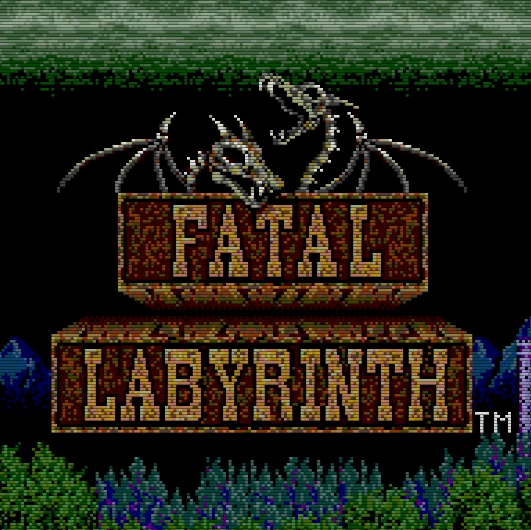 Fatal Labyrinth
Fatal Labyrinth
Sega Genesis, 1991
Developer: Sega
Publisher: Sega
At somewhat of a loss as to what to cover after two solid weeks of playing and re-playing Zombie Revenge, I noted that I really hadn’t covered any Sega Genesis games. Sure, I’ve played through Time Gal and scratched the surface of Silpheed, but those are Sega CD games, so they don’t really count. As such, I put out the question to the Internet: “Can anyone recommend a weird/obscure Genesis RPG?” At the suggestion of several members of NeoGAF’s Genesis/Mega Drive community, I decided to check out Fatal Labyrinth.
I was not disappointed.
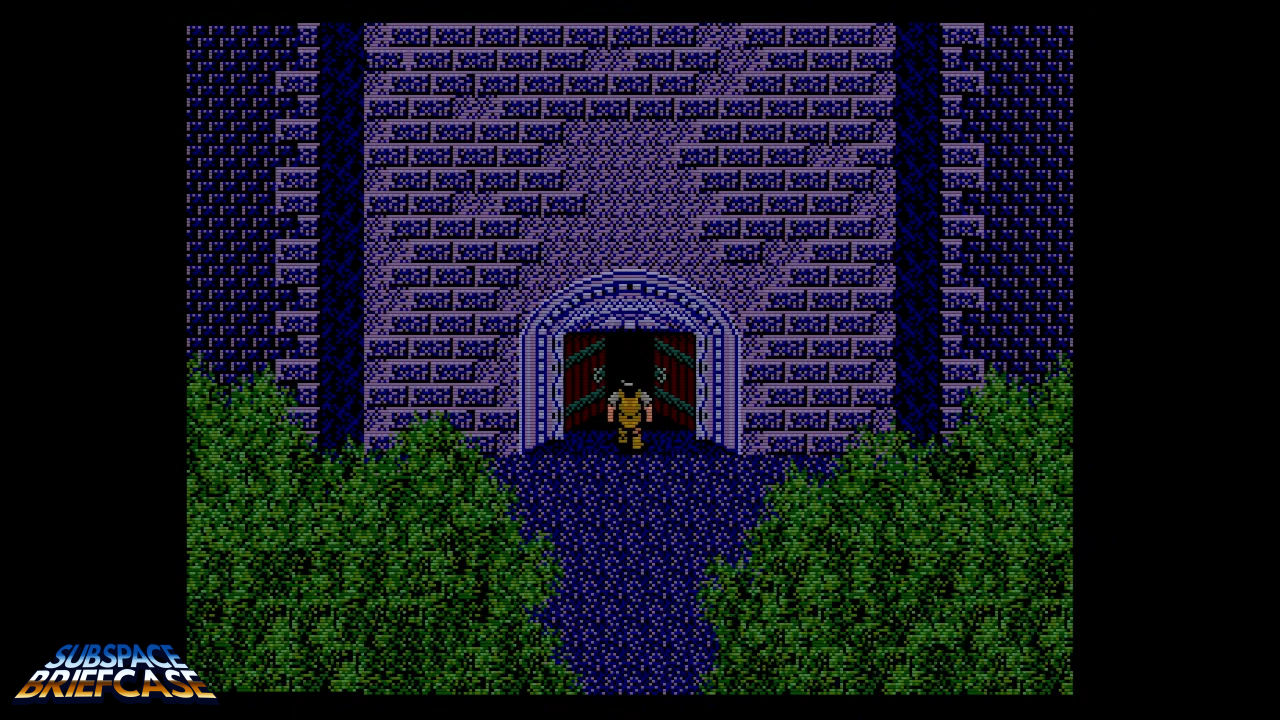
Released to North American audiences in 1991, Fatal Labyrinth puts the player in shoes of a voiceless cipher of a protagonist. His quest? Retrieve a holy goblet from from a red dragon who sits atop a 30-story castle. No princess to rescue for our nameless knight. Guess he drew the short straw on career day.
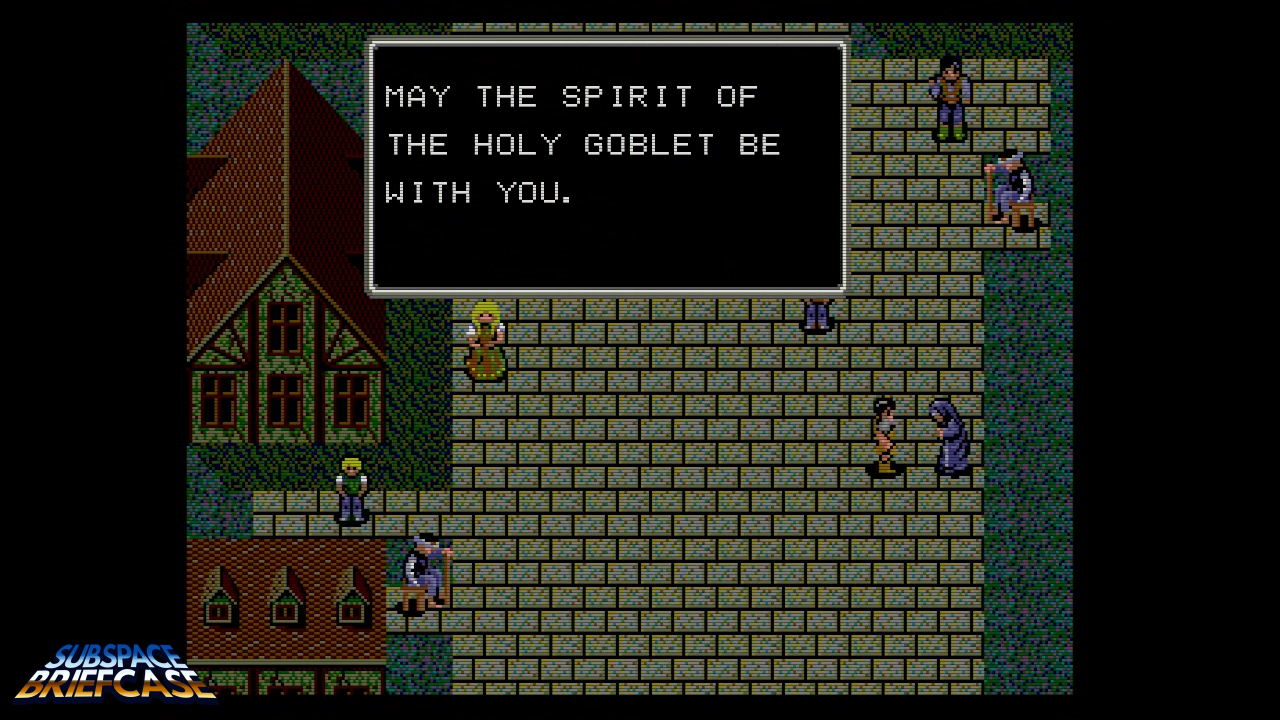
Fatal Labyrinth is a roguelike, in the classic sense of the term. While there’s a healthy debate as to what exactly constitutes a roguelike these days, as applied to Fatal Labyrinth, you can take it to mean the following:

1. Fatal Labyrinth is primarily comprised of procedurally-generated “random” levels. With the exception of a few select areas, each floor of the dragon’s castle (cleverly named “Dragonia”) will be randomly generated on each playthrough. Exit locations, secret doors, and item locations will change every time you load up Fatal Labyrinth. In short, you’ll probably never play the same set of levels twice.
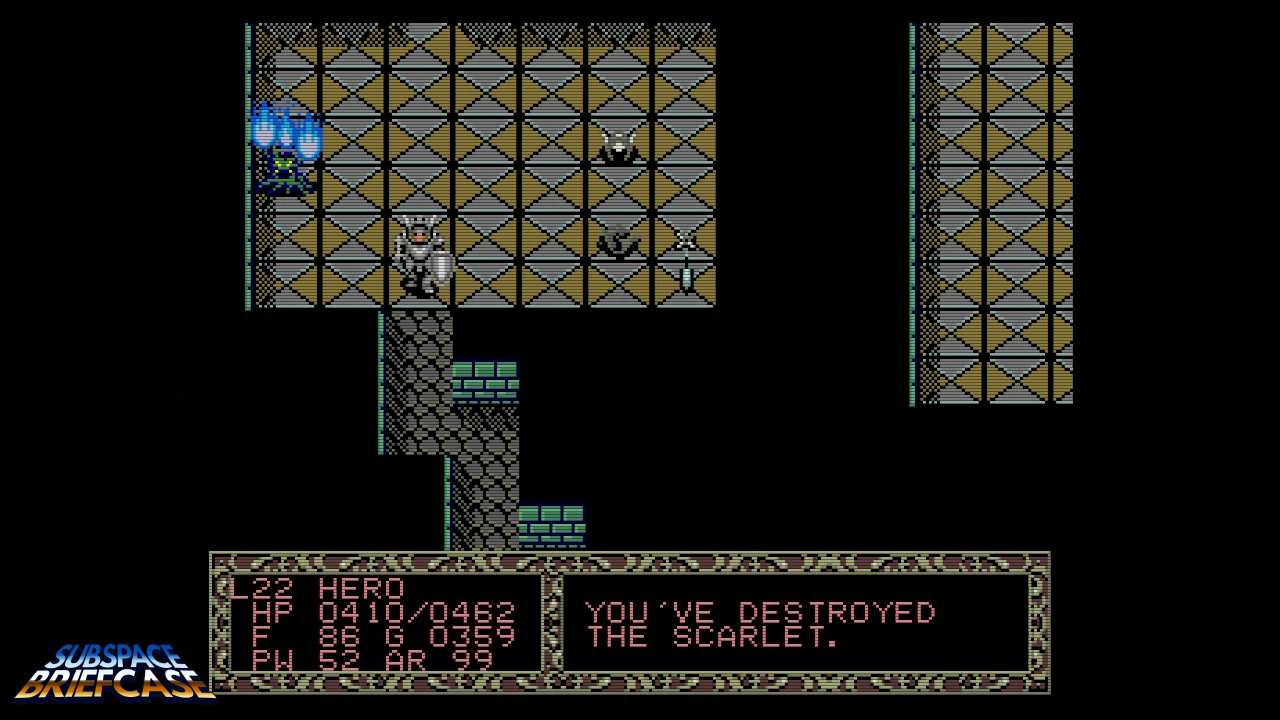
2. Movement is turn-based and aligned to grid. Enemies only move when you move, and vice versa.

3. Combat is in no way based on manual dexterity. You simply fire your weapon or move your character into a monster and hope that the dice roll in favor of a hit.

4. The properties of most items will remain unknown until discovered by the player. By way of example, in your travels, you may find a yellow potion. Until you use that potion, by either drinking it or throwing it at a monster, you’ll have no idea what it does. It may cause blindness, it may heal your wounds; you won’t know until you observe the results. To further complicate things, the properties of yellow potions will change with each playthrough as well. In other words: you need to relearn what special items do each time you start a new game.
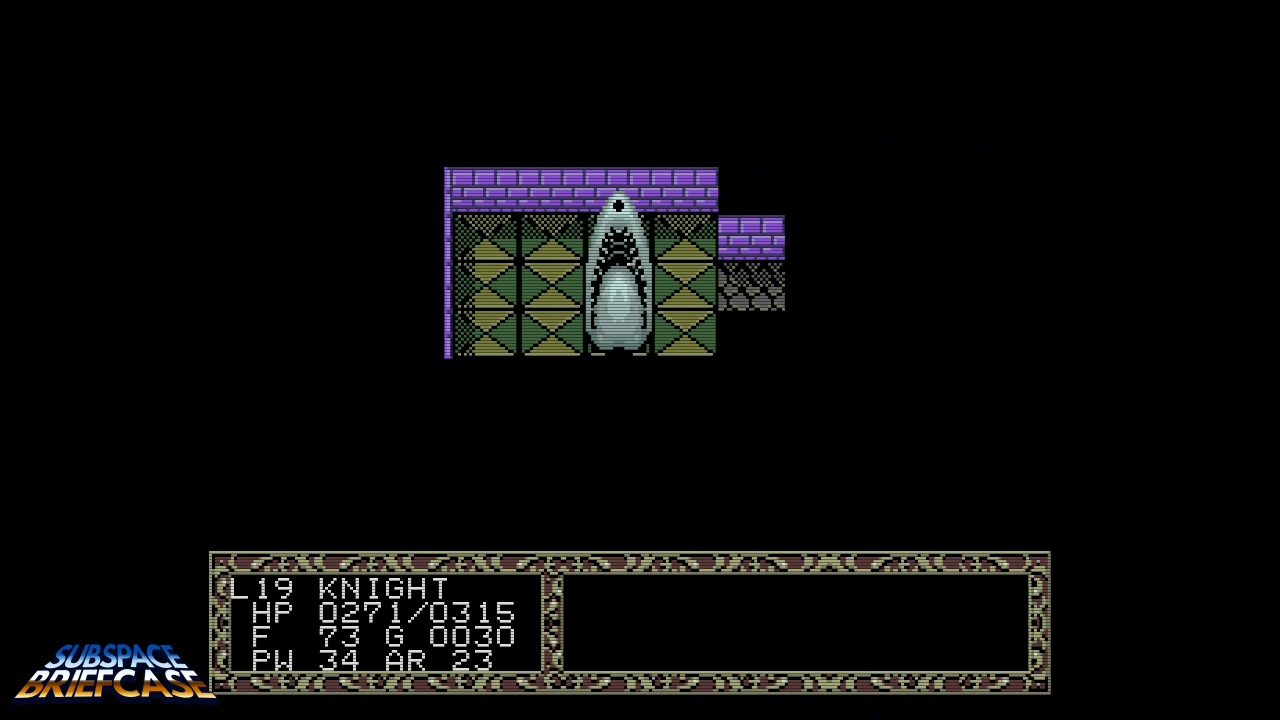
5. Most roguelikes also feature permanent death – only one shot at glory. Fatal Labyrinth eschews this in favor of a checkpoint system, allowing you to restart at checkpoints placed roughly every five levels. There’s a catch, though: everything you’ve encountered up to the point of your death will be randomized again with each continue.
As far as I can tell, Fatal Labyrinth is one of the first roguelikes released for a game console. In fact, I can’t think of any console roguelikes that predate it. [UPDATE – I am told that there is no way this is THE first roguelike released for a home console. At bare minimum, Cloudy Mountain for the Intellivision, Gateway to Apshai for Colecovision, and Fatal Labyrinth’s predecessor, Dragon Crystal for the Sega Master System precede it. Let no one say that I have spread misinformation!] While it lacks the complexity of some of its genre contemporaries and forebears (it’s nowhere near as variable as NetHack, or perhaps even Rogue itself), Fatal Labyrinth has a pick up and play appeal that is undeniable. It’s a great game to pick up if you’re in the mood for a mindless, randomized dungeon hack. Plus, you know, it actually has GRAPHICS, which most roguelikes didn’t have at the time.
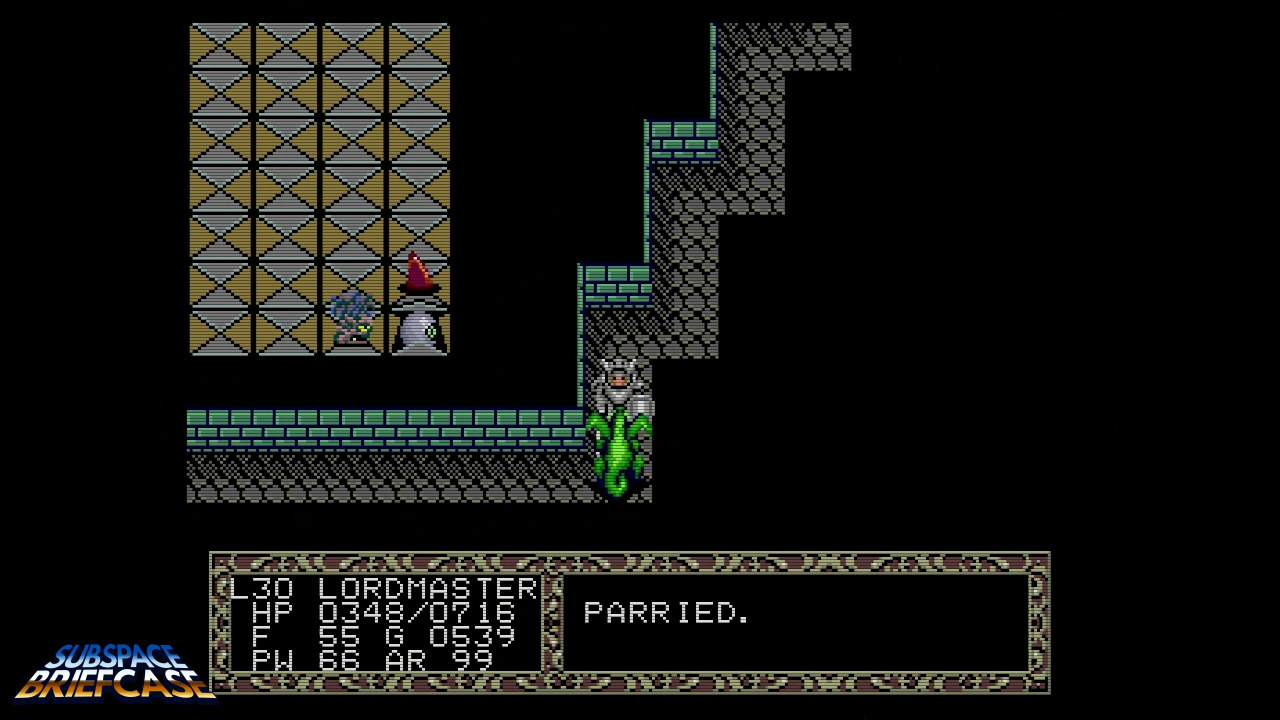
Fatal Labyrinth has some interesting quirks as well. For starters, the levels are littered with gold coins. Certain enemies will even steal your gold coins. There are even enemies that mimic the appearance of gold coins in an attempt to ensnare your unsuspecting hero. Despite this, there are no shops in the game. Gold coins cannot be exchanged for anything. Acquiring wealth provides no discernible benefit to the player. That is… until you die.

You see, in lieu of a conventional “game over” screen, Fatal Labyrinth treats you to a look at your character’s funeral service. The amount of mourners present is directly related to the amount of cash on hand you had when you died.

This is equal parts amusing and horribly depressing. Just remember kids: It doesn’t matter how many monsters you slay, people will only miss you if you were rich. So try and die wealthy.

Equally entertaining are Fatal Labyrinth‘s hunger mechanics. As is the case in may roguelikes, your hero must eat. So long as you’ve got meat in your belly, you’ll slowly regain health. Conversely, if you’re running on an empty stomach, your health continually depletes.This, of course, means that you’re constantly searching for things to eat. Food is not difficult to find in Fatal Labyrinth, but there’s a catch: you can’t be a glutton.
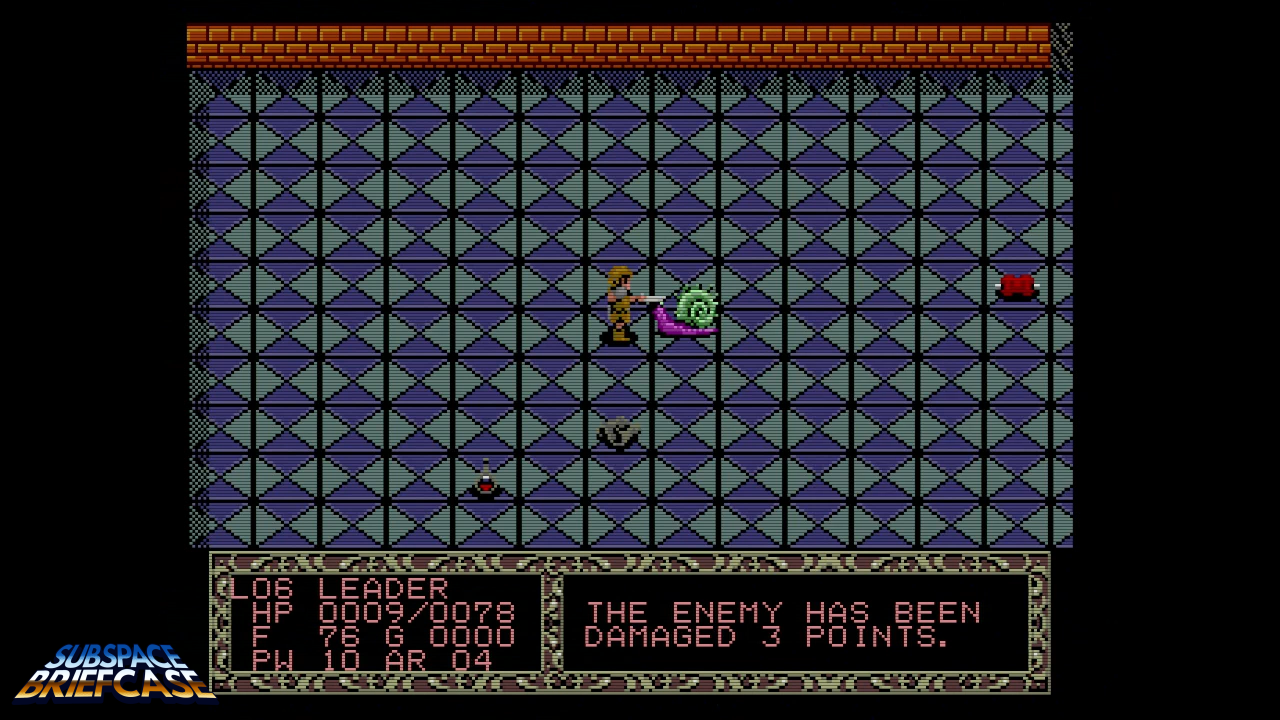
If you fill your food stores to 4/5 of their maximum capacity, your character will announce that he has eaten too much, and begin to move at a slower pace – monsters will get two actions for every step your portly protagonist takes. This will persist until you’ve digested down to an acceptable level. Making things even stranger, if you EXCEED your maximum food capacity, you will DIE. You can actually EAT YOURSELF TO DEATH.

If nothing else, then, Fatal Labyrinth teaches us two very valuable life lessons. First: Don’t overeat. Second: If you must overeat, make sure you are rich, so people will mourn your passing. Nobody likes poor, dead fat people.
Positive characteristics aside, I can’t imagine that Fatal Labyrinth impressed too many Genesis owners back in 1991. The first thing one notes when booting up Fatal Labyrinth is its spartan visual presentation. Its tile based graphics are anything but flashy, and would probably look more at home on a Sega Master System or a NES.
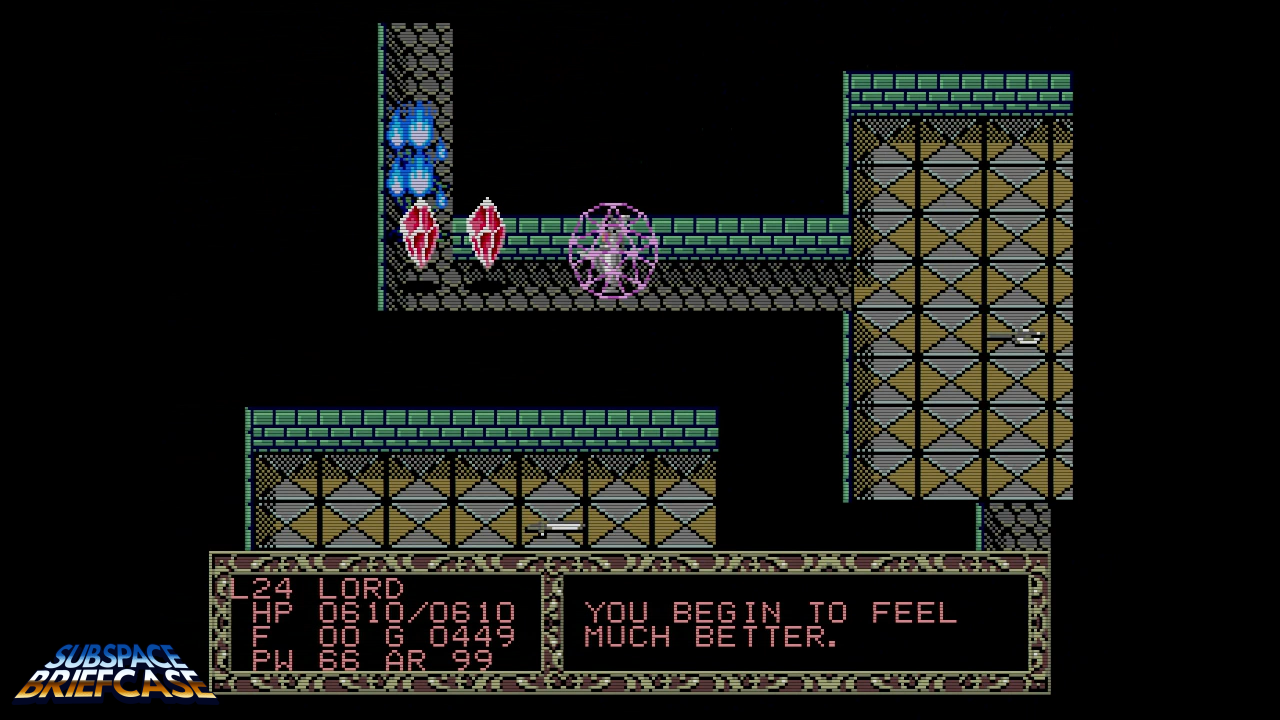
This isn’t a game that puts that the Genesis’ vaunted “blast processing” to any great use, either. Aside from its color palette, there’s nothing 16-bit about Fatal Labyrinth, and I imagine that more than a few Genesis owners weren’t too thrilled with that fact (particularly where Sonic the Hedgehog hit the Genesis two months earlier). The whole ROM only takes up about 128k.
There’s an interesting reason for that, though: Fatal Labyrinth was originally designed as a downloadable game. While US audiences wouldn’t be able to take their Genesis online until the launch of the Sega Channel in late 1994, Japan was a little bit ahead of the curve in terms of online gaming. In 1990, Sega of Japan released the Mega Modem, a console peripheral which allowed players to engage in rudimentary online gaming, and even download games to their console. For more information on the Mega Modem, check out this fantastic little video from Greg Sewart of the Player One Podcast:
Fatal Labyrinth’s relative simplicity and small size is likely attributable to the fact that it was designed to be transmitted over phone lines at 1991 download speeds. While Fatal Labyrinth may have seemed less than impressive as a retail release, I have to imagine it seemed AMAZING to any Japanese kid that MAGICALLY RECEIVED IT OVER THE PHONE.

If anything, Fatal Labyrinth stands as a testament to Sega’s legacy of bringing new concepts and ideas to the home console market. As a console roguelike and a downloadable game, Fatal Labyrinth is sort of a pioneer two times over. On top of that, its fundamental mechanics are sound, and you can play through it in about two to three hours. As it can be picked up for relatively cheap these days, I’d recommend it to any Genesis enthusiast. There’s even a version for Steam that you can pick up for the low, low price of $2.99. Give it a shot!
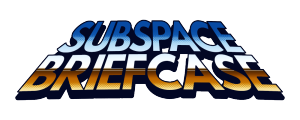
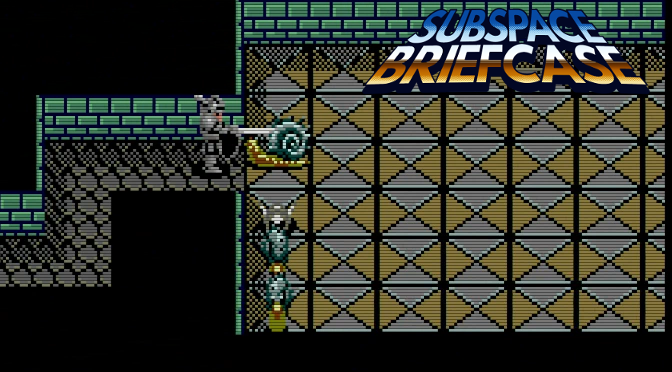
Thanks for the shout out!
Thanks for the years of free entertainment!